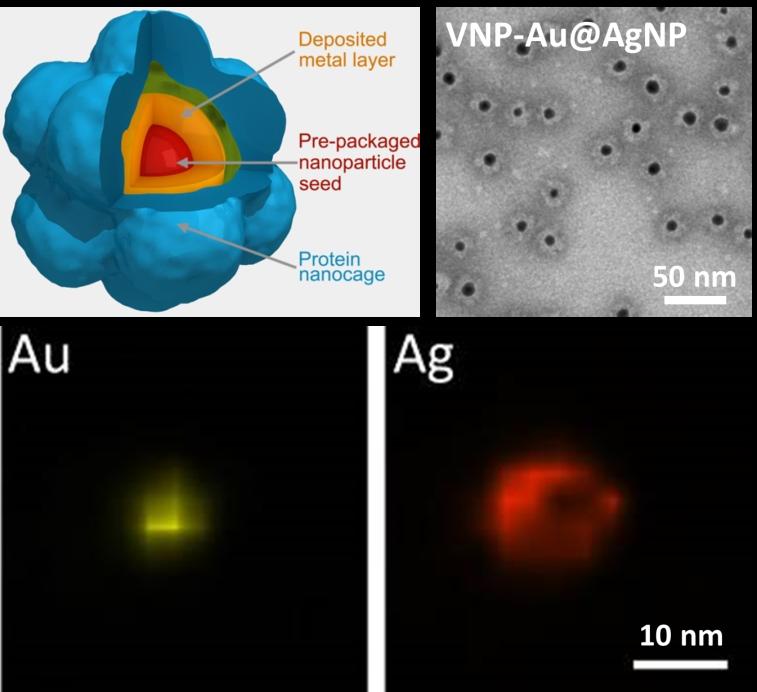Researchers established a novel strategy to mineralize inorganic nanoparticles inside the viral protein cage
Date:07-06-2017 | 【Print】 【close】
Mineralization templated by bio-nanostructures has been a focus in the field of nanomaterial synthesis of late. Various bio-nanostructures (e.g., protein nanocages, nanotubes, and nanowires) have been investigated for the templated synthesis of nanomaterials and have been found to offer excellent control over the morphology and properties of the target.
As a well-known class of nanoplatforms, protein nanocages have received intense attention for the biomineralization of nanomaterials. Protein nanocages are assembled from multiple copies of protein subunits with a spherical shape, generally 10–200 nm in diameter and an inner cavity. Several advantages of protein nanocages including well-defined structures with monodispersity, controllable assembly, and convenient preparation and modification, make them suitable templates for the controlled fabrication of nanomaterials.
In a joint study with Prof. ZHANG Xian'en from Institute of Biophysics of the Chinese Academy of Sciences, the research group led by Prof. LI Feng from Wuhan Institute of Virology of the Chinese Academy of Sciences put forward a simple route to circumvent such a limitation: encapsulation of a preformed nanoparticles (NP) as the seed via self-assembly, followed by the growth of an outer metal layer. Using such a method, they succeeded in mineralizing size-tunable Au NPs and Au@Ag core–shell NPs (<10 nm in diameter) with narrow size distributions inside the virus-based NPs of simian virus 40.
In this work, ELD of a metal layer onto a pre-encapsulated AuNP core inside a protein nanocage was achieved. Enlarged AuNPs and Au@Ag core–shell NPs with narrow size distributions were synthesized, with the thickness of the deposited layer being finely tuned under confinement by the protein nanocage by controlling the input of metal precursors, as evidenced by UV–Vis spectroscopy, agarose gel electrophoresis, TEM, and EDS.
The method demonstrated in this work is unique in directly encapsulating preformed NPs as the seed through self-assembly, instead of synthesizing the seed inside the protein nanocages. Therefore, it does not need the introduction of ion affinity tags via protein modification. Most importantly, it circumvents the limitation that only gentle reaction conditions can be used for seed synthesis inside protein cages to avoid protein damage, opening up the possibility that many more kinds of chemically synthesized NPs could be used as seeds for mineralization inside protein nanocages.
The method provides a new way to fabricate hybrid bio-inorganic NPs with tailored components and structures for a variety of applications.
The results have been published in Nano Research entitled " Reaction inside a viral protein nanocage: Mineralization on a nanoparticle seed after encapsulation via self-assembly ".
This work was supported by the National Natural Science Foundation of China and the Key Research Program of the Chinese Academy of Sciences.

Mineralization of silver on AuNPs inside VNPs at different ratios of silver precursor to AuNP seed. Image by LI Feng
Contact
LI Feng
E-mail: fli@wh.iov.cn
Wuhan Institute of Virology, Chinese Academy of Sciences, Wuhan 430071, China. (http://english.whiov.cas.cn/)
